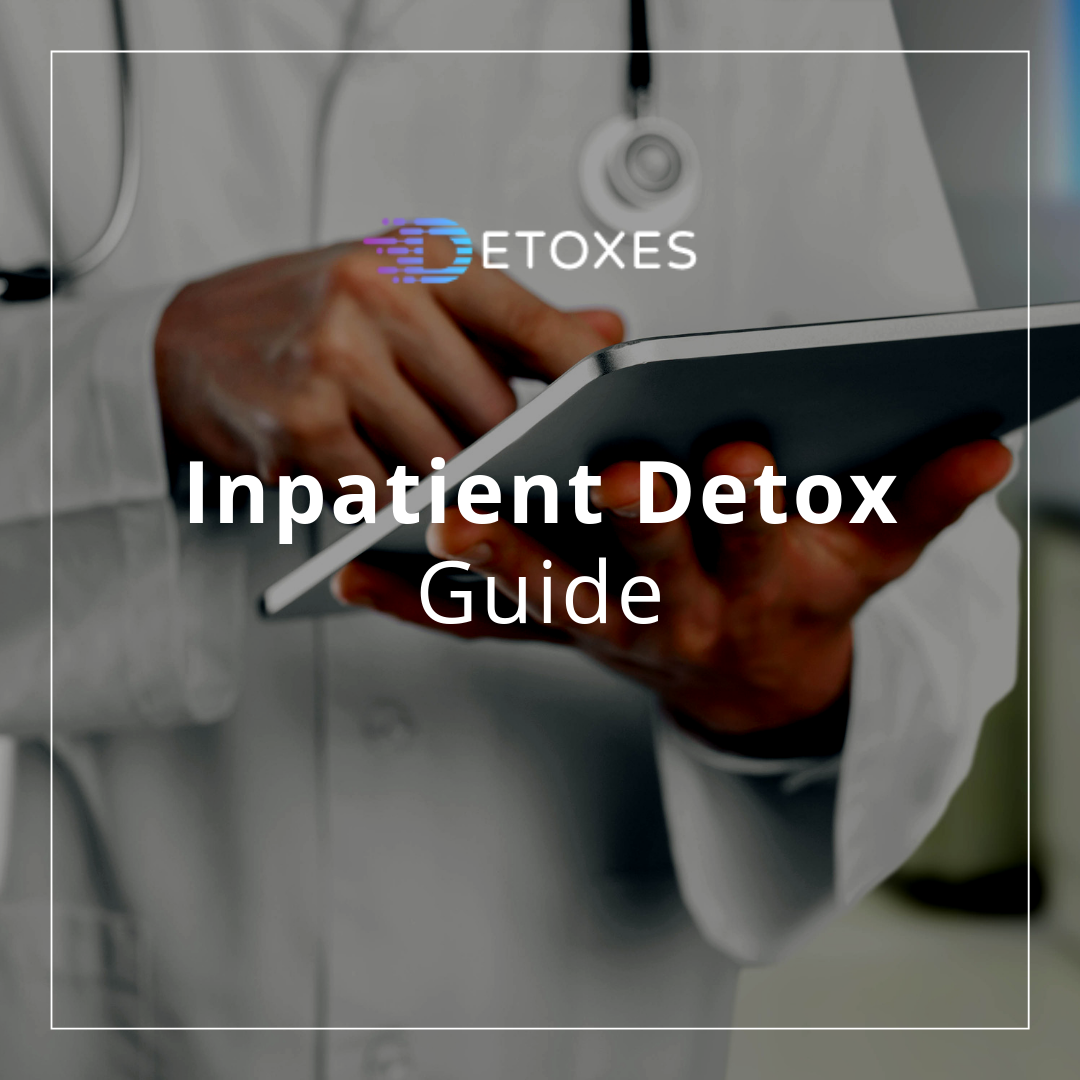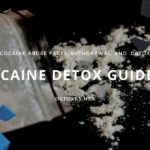Inpatient Detox
Withdrawals can be painful and even potentially dangerous. Because of this, it is often advised to go through the process of withdrawal under medical supervision. Inpatient detoxification occurs in hospitals and specialized clinics. Persons enrolled in these programs sleep at the facility and have 24 hour supervision (Healthwise Staff, 2017). Inpatient therapy is often followed up with outpatient treatment after discharge, which you can read about here.
Main Uses of Inpatient Detox Programs
The goals of any inpatient detoxification program are as follows (Hayashida, 1998):
- Achieve a substance-free state
- Relieve the immediate withdrawal symptoms
- Treat any comorbid psychiatric or medical conditions
A person may remain admitted in an inpatient setting for 1 to 6 weeks, yet most people stay for 5 to 14 days.
When is Inpatient Detox Appropriate?
Inpatient treatment is appropriate if the following apply (Healthwise Staff, 2017):
- One has previously attempted outpatient treatment and relapsed
- The substance user in question has other physical or mental health problems
- The area where the person in recovery stays is subject to multiple drug influences, and makes it more difficult to abstain from substances.
- The person in recovery does not have access to extensive social support (e.g. family and friends)
- He or she stays far away from an outpatient treatment center
- The person is at risk for potentially life-threatening complications of withdrawal e.g. delirium tremens from alcohol withdrawal
- He or she is either suicidal or homicidal
One major disadvantage of inpatient detoxification is the costs involved (Hayashida, 1998). Due to this, if a substance user does not require 24 hour supervision and is not at risk for serious withdrawal symptoms, outpatient treatment is cheaper and may be a viable option. Please read our article here on outpatient treatment to ascertain if this is a better option for you. Health professionals at these facilities can also conduct assessments to ascertain if someone is fit for an outpatient or inpatient facility.
How Do You Choose and Begin an Inpatient Detox Program?
Always find a center that complies with the following standards (Center for Substance Abuse Treatment, 2006):
- Has medical expertise with treating the specific drug-use problem that you or a loved one is struggling with
- Has a specific aftercare program (outpatient treatment after discharge)
- Uses evidence-based group therapy, or programs such as 12-step facilitation and cognitive behavioral therapy
With regards to funding, it is important to find out if the center accepts insurance, offers payment plans or has scholarships. However, always remember that, over time, an effective drug recovery program does not cost more than the “cost” of drug addiction. Substance use costs the United States over $600 billion dollars when taking into account health care expenses, crime and lost productivity (National Institute on Drug Abuse, 2017). This does not even take into account the personal financial loss that a drug user accrues on chasing their “high.” And, of course, no monetary value can be placed on a person’s own life.
After getting in contact with your chosen facility, you will often meet with a clinician and/or nurse to help you with the following (Healthwise Staff, 2017):
- Understand the program
- Fill out paperwork
- Answer questions
- Assess your health and comorbidities
- Determine family and living support
Thereafter, recommendations will be made based on whether an outpatient or inpatient detox is more likely to work.
Please peruse our online guide and list of providers who can help you or a loved one today.
What You Can Expect in an Inpatient Detox Center
After admission and initial assessment, acute withdrawal symptoms are treated. Every substance causes a certain withdrawal syndrome with varying degrees of severity. Please peruse our useful guides to find out what to expect with different substance withdrawals.
Medications often are provided to help reduce a patient’s withdrawal symptoms. Doctors in the center will determine whether this medication is necessary. The following medications have a role in medically assisted inpatient withdrawal:
- Benzodiazepines
- Their efficacy is well-established in the use of mitigating alcohol withdrawal. They not only reduce the symptoms themselves but also prevent seizures, which occur in an estimated 1-4% of patients (Gerevich, 2007).
- Buprenorphine
- It is known as suboxone when combined with naloxone. Read our article here about this drug. It is used therapeutically for opioid detoxification, and can also be used in an outpatient setting. A study by Mitchell et al. (2013) has shown that buprenorphine can be used in community-based programs to combat opioid withdrawal. Buprenorphine is safer than methadone, as overdose is much rarer secondary to buprenorphin’s ceiling effect and weaker efficacy. It is better suited to those with mild-moderate dependence (Whelan & Remski, 2012)
- Methadone
- This is another drug used in opioid detoxification. One of its earliest uses in the United States was in methadone treatment clinics specifically for Vietnam war veterans returning home with heroin addiction (National Institute on Drug Abuse, 2018). Methadone performs better than buprenorphine in clinical trials with regards to treatment outcomes, but must be carefully monitored. It can be used with all levels of dependence due to its stronger efficacy (Whelan & Remski, 2012).
Please note that these drugs may have potential side effects and should always be discussed with your attending physician at the inpatient facility. Methadone particularly should not be used outside of an inpatient facility due to potential risks of overdose. Medically assisted withdrawal should be monitored by trained professionals in a facility.
Understand that the professionals are there to help you. An inpatient center should serve as a safe place to withdraw and detox.
Effectiveness – What Does the Evidence Say?
So are these programs worth your money and will they achieve lasting results?
One randomized, prospective study looked at the effectiveness of outpatient versus inpatient detoxification of alcohol (Hayashida et al., 1989). Significantly more inpatients than outpatients completed detoxification; 95% vs. 72% respectively. At one month follow-up after successful completion of the programs, there were fewer alcohol-related problems among inpatients.
Hayashida et al. (1989) also demonstrated costs between the two programs. Costs were substantially higher for inpatients, ranging from $3,319 to $3,665 per patient. Outpatient costs ranged from $175 to $388. It was concluded that, for patients with mid-to-moderate symptoms of alcohol withdrawal, outpatient treatment is a safe and cost-effective alternative to inpatient care.
Yet outcomes of different programs rely on patient characteristics rather than programs themselves. Rosseger, Keller, Odenwald and Endrass (2009) emphasize the necessity of inpatient treatment in patients with severe psychiatric disturbances, medical comorbidities or those having a fragmented social structure and poor social support.
In Conclusion
Inpatient programs help forge a steady path towards rehabilitation. The advantages lie in having professional input as well as medically assisted withdrawal. The major disadvantage is the cost, which should be discussed with your facility upfront. Remember, for the right candidates, outpatient treatment remains a possibility and you can read about it here. Success rates may not be 100% but every program has to be viewed through a unique lens and scrutinized for the individual’s needs.
These programs remove someone from the toxic environment which may be fuelling their drug addiction. It is essential in these instances to remove yourself or your loved one from these environments and break free of the vicious cycle of addiction.
References
Center for Substance Abuse Treatment. (2006). Treatment Improvement Protocol (TIP) Series. 47. Rockville, MD: Substance Abuse and Mental Health Services Administration; Substance Abuse: Clinical Issues in Intensive Outpatient Treatment.
Gerevich J. (2007). Drug and alcohol abuse: a clinical guide to diagnosis and treatment. Journal of Epidemiology and Community Health, 61(2), 173–174.
Hayashida, M., Alterman, A.I., McLellan, A.T., O’Brien, C.P., Purtill, J.J., Volpicelli, J.R., Raphaelson, A.H., & Hall, C.P. (1989) Comparative effectiveness and costs of inpatient and outpatient detoxification of patients with mild-to-moderate alcohol withdrawal syndrome. New England Journal of Medicine, 320(6):358–364
Hayashida, M. (1998). An overview of outpatient and inpatient detoxification. Alcohol Health Res World, 22(1):44-46.
Healthwise Staff. (2017). Inpatient and Outpatient Treatment for Substance Use Problems. Retrieved February 28, 2019 from https://www.cigna.com/individuals-families/health-wellness/hw/medical-topics/inpatient-and-outpatient-treatment-for-substance-ad1101
McLellan, A.T., Luborsky, L.; Woody, G.E.; O’Brien, C.P., & Druely, K.A. (1983). Predicting response to alcohol and drug abuse treatments. Archives of General Psychiatry, 40(6):620–625.
Mitchell, S. G., Gryczynski, J., Schwartz, R. P., O’Grady, K. E., Olsen, Y. K., & Jaffe, J. H. (2012). A randomized trial of intensive outpatient (IOP) vs. standard outpatient (OP) buprenorphine treatment for African Americans. Drug and alcohol dependence, 128(3), 222-9.
National Institute on Drug Abuse. (2017). Trends & Statistics. Retrieved February 28, 2019 from https://www.drugabuse.gov/related-topics/trends-statistics#supplemental-references-for-economic-costs
National Institute on Drug Abuse. (2018). NIH Fact Sheets – Heroin Addiction. Retrieved February 28, 2019 from https://report.nih.gov/NIHfactsheets/ViewFactSheet.aspx?csid=123
Rossegger, A., Keller, A., Odenwald, M., & Endrass, J. (2009). The appropriateness of the treatment setting for the inpatient post-acute treatment of alcohol dependence disorders in Switzerland. Int J Ment Health Syst, 3(1):16.
Whelan, P. J., & Remski, K. (2012). Buprenorphine vs methadone treatment: A review of evidence in both developed and developing worlds. Journal of neurosciences in rural practice, 3(1), 45-50.
Medically Reviewed: September 25, 2019

All of the information on this page has been reviewed and verified by a certified addiction professional.








